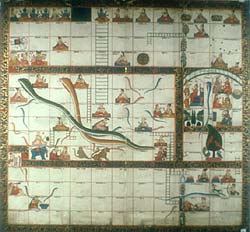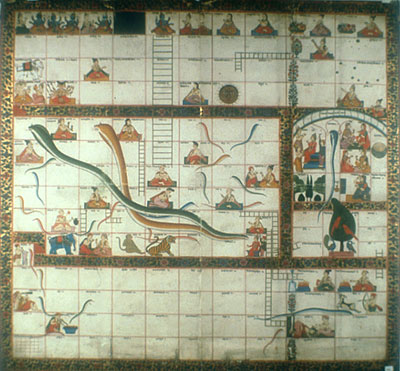
|
Games of Chance | ||||||||||||
|
Gyan chaupad board |
Snakes and Ladders
The game that has long been widespread in the British Isles under
the name of snakes and ladders—and less so in America as chutes
and ladders—did not begin its history as a simple game at
all. It originated as a form of moral instruction to expound the
idea to children that good is rewarded and evil punished. Its origins
certainly lie in India, where, at some point yet to be determined,
a simple linear race game of numbered squares with philosophical
implications evolved, in which each player’s single piece
moves fatefully from one end of the board to the other, impelled
by the throw of dice or cowrie shells. This straightforward progress
is enlivened by interruptions in the form of ladders and snakes
that stretch between two given squares. Each individual square also
carries an inscription that exemplifies a moralizing precept. The
lower squares are concerned with mortal vices or hellish states
and the upper with heavenly realms and spiritual states, so that
the ladders draw the player up (toward heaven), and the snakes draw
him down (toward hell). |
||||||||||||





